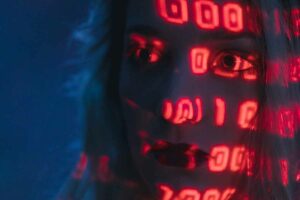Artificial intelligence art generators offer an exciting platform for exploring the boundaries of creativity. They enable users to experiment with various styles, techniques, and themes without any prior artistic expertise. Through advanced neural networks, these systems can analyze vast amounts of visual data from different sources such as paintings, photographs, or even nature itself.
With the advent of artificial intelligence art generators, artists and enthusiasts alike are witnessing a groundbreaking fusion between human creativity and machine intelligence. These innovative systems employ cutting-edge algorithms to analyze vast amounts of data, learn from existing artistic styles, and generate unique pieces that captivate viewers with their ingenuity.
In this article, we will delve into the world of artificial intelligence art generators, exploring their capabilities, impact on the art landscape, and potential for shaping future artistic expressions.
Table of Contents
Unveiling the wonders of an AI art generators
Once you step inside an artificial intelligence art generators, you are transported to a world of extraordinary imagination and creativity. This innovative technology brings together the realms of AI and art, providing a unique platform for artists and enthusiasts alike to explore new horizons in artistic expression.
By harnessing the power of machine learning algorithms, these generators can analyze vast amounts of data and produce stunning artworks that push the boundaries of human imagination.
One of the wonders that an AI art generator unveils is its ability to create art that transcends traditional forms and styles. Freed from conventional constraints, these machines can generate mesmerizing abstract compositions or experiment with unconventional color palettes.
The unpredictable nature of their output adds an element of surprise and fascination to the creative process, as artists never know what masterpiece may emerge next.
Moreover, this technology opens up new possibilities for collaboration between humans and machines, allowing artists to incorporate AI-generated elements into their own works or use them as inspiration for further exploration.
In conclusion, stepping inside an AI art generator is like entering a gateway to a world where imagination knows no bounds. It provides artists with endless opportunities for experimentation and innovation in their craft while challenging our conventional understanding of what constitutes art.
By embracing this technology and exploring its wonders, we can witness firsthand how artificial intelligence has become an invaluable tool in shaping the future of artistic expression.
Understanding the technology behind AI art
Artificial intelligence (AI) has revolutionized various industries, and art is no exception. Understanding the technology behind AI art allows us to delve into the extraordinary capabilities of machines in creating thought-provoking and visually stunning pieces.
At its core, AI art relies on machine learning algorithms that have been trained on vast amounts of data, including paintings, photographs, and other visual arts. By analyzing patterns and structures within this dataset, AI algorithms can generate original artworks that mimic different artistic styles.
One key technology used in AI art generation is Generative Adversarial Networks (GANs). GANs consist of two neural networks: a generator network and a discriminator network.
The generator network creates new images based on random noise input, while the discriminator network aims to differentiate between these generated images and real ones. Through an iterative process of training both networks against each other, GANs are able to produce highly realistic artworks that showcase creativity beyond what was previously possible.
Another important aspect of understanding the technology behind AI art is deep learning. Deep learning models, particularly convolutional neural networks (CNNs), play a crucial role in analyzing visual patterns and extracting features from images.
These models enable machines to capture intricate details such as brush strokes or color combinations present in famous artworks or specific artistic styles. By incorporating deep learning techniques into the generation process, AI systems can learn from existing artwork and create their own unique interpretations with impressive precision.
Exploring the creative process of Artificial Intelligence Art Generators
Step inside an artificial intelligence art generator and discover the extraordinary world of AI-generated artwork. The creative process of AI art is truly fascinating, as it combines the power of technology with human imagination to produce unique and thought-provoking pieces.
At its core, AI art begins with a dataset that serves as a source of inspiration for the machine learning algorithms. These algorithms then analyze and interpret the data, identifying patterns, colors, and textures that can be used to create aesthetically pleasing visuals.
Once the initial analysis is completed, the AI system starts generating images based on what it has learned from the dataset. This iterative process involves refining and improving upon each generated image until a final result is achieved.
What makes AI art so exciting is that it often produces unexpected outcomes that challenge traditional notions of creativity. Artists who work with AI generators are constantly pushing boundaries and exploring new possibilities in their quest to unleash the full potential of artificial intelligence in artistic expression.
The exploration of this creative process opens up endless opportunities for collaboration between humans and machines in producing unique works of art. By embracing AI-generated artwork, we can delve into uncharted territories where human imagination meets technological innovation, resulting in truly captivating pieces that captivate our senses and push us to question our understanding of creativity itself.
As we continue to explore this emerging field, we are witnessing an evolution in artistic practices that promises to redefine how we perceive and appreciate art in the digital age.
The significant impact of AI generated artworks
One significant impact of AI art is its ability to push the boundaries of creativity. By leveraging machine learning techniques, these algorithms can analyze vast amounts of data and learn from patterns, enabling them to create artwork that surpasses human imagination.
This opens up exciting avenues for artists to explore new styles, forms, and concepts that were previously unimaginable.
However, this also raises concerns about the role of human agency in creating art. As AI becomes more capable at generating sophisticated artworks, questions arise regarding who should be credited as the artist.
Is it solely the algorithm or should credit be given to those who trained it or initiated its creative process? These debates challenge traditional notions of authorship and highlight the need for a reevaluation of how we define art in an increasingly technologically-driven world.
Unraveling the controversy surrounding AI Art Generators
Artificial intelligence (AI) has made significant strides in various fields, including art. AI-generated artwork is a fascinating concept that has piqued the interest of both artists and technologists.
However, it has also sparked controversy and debate within the art community. One of the main points of contention is whether AI-generated artwork can be considered true art. Critics argue that since AI lacks human emotion and creativity, its output cannot be compared to works created by human artists.
Proponents of AI-generated artwork counter these arguments by highlighting the unique capabilities of AI. They argue that while traditional art relies on human imagination and skill, AI offers a new dimension to artistic expression.
By analyzing vast amounts of data and patterns, AI algorithms can create visually stunning pieces that may not have been conceived by humans. This challenges conventional notions of what constitutes art and opens up possibilities for new forms of creative expression.
The controversy surrounding AI-generated artwork extends beyond questions about its validity as art. There are also concerns about the role of artists in this process. Some worry that as AI becomes more advanced, it could replace human artists altogether, leading to job losses and a decline in the value placed on traditional artistic skills.
Others argue that instead of replacing artists, AI could serve as a tool or collaborator in their creative process, enhancing their abilities rather than diminishing them.
Generally, the controversy surrounding Artificial Intelligence Art Generators artwork stems from questions about its authenticity as true art and concerns about its impact on human artists’ roles and livelihoods.
The Experience of Artificial Intelligence Art Generators
The experience of witnessing an AI-inspired masterpiece is truly extraordinary in comparison to traditional artworks. These artworks often evoke emotions while simultaneously questioning our understanding of creativity. The combination of human input and machine learning algorithms results in a symbiotic relationship where each influences the other.
In conclusion, the world of AI art offers an exciting glimpse into the limitless possibilities that technology can bring to the creative realm. By stepping inside an artificial intelligence art generators, individuals have the opportunity to discover extraordinary pieces of artwork that push the boundaries of imagination and challenge traditional notions of creativity.












